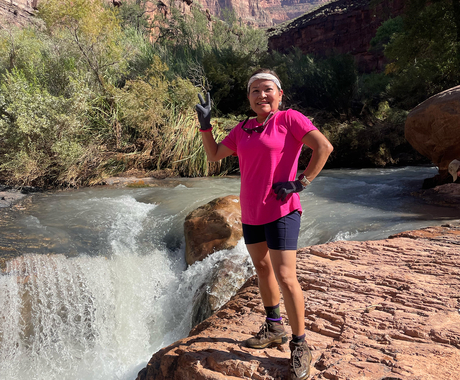The coronavirus pandemic has swept through the U.S., leaving devastation in its wake. In less than a year, our country has suffered the loss of nearly 500,000 souls due to COVID-19.
For the first time in months, Americans are starting to see light through that darkness. Vaccines have been introduced, approved, and administered to medical personnel and health care workers around the country. Soon, all Americans will have the opportunity to receive a vaccination.
Nicole Fisher, of West Point, Nebraska, has worked in health care for more than four years, and is currently attending nursing school. Getting vaccinated was high on her list of priorities for several reasons.
“I wanted to know I was doing everything I could to protect my residents at work from being exposed and getting sick, as well as keeping my family and friends from getting sick through me,” she said. “Our community has lost many loved ones to this pandemic, and when you're from a small town, everyone is like family, so it's just as much about the community too.”
Though many rural Americans are hesitant to get vaccinated, Nicole reassures those in doubt there were no shortcuts taken when making this vaccine.
“We know there are many types of coronaviruses,” she said. “Two in particular are SARS and MERS. Vaccine trials had been in the works for SARS-CoV and MERS-CoV for a few years. To make a really long point short, since COVID-19 is the disease caused by SARS-CoV-2, scientists didn't have to start from scratch when trying to create a vaccine for COVID-19, a large portion was already there.”
Researching the topic is another crucial step in deciding whether or not to be vaccinated. Nicole says the Centers for Disease Control and Prevention (CDC) and the World Health Organization (WHO) are trustworthy, reputable resources, and good places to begin looking for information. Local research is also beneficial.
“Look at what your local health department is putting out there for resources,” she said. “There is way too much false information out there right now that is making people afraid of this vaccine.”
Nicole encourages people to also look at the U.S. Food and Drug Administration's (FDA) website, where they can find explanations for emergency authorizations, the different types of vaccinations available in the U.S., common ingredients in vaccines in the U.S., and more.
Since Nicole works in the health care field, she was one of the first Nebraskans to receive both doses of the vaccine and says her experience, especially as someone with underlying health issues involving inflammation, was much as she expected it to be.
After the first dose, she had mild arm soreness for about two days and no other side effects. Several hours after her second dose, Nicole felt weak and fatigued, and had a headache that lasted a few days, which kept her home resting in bed. She said not all people will have that experience, and a person’s immune response may vary based on their own health considerations, though, ultimately, the response shows your immune system is working.
“The rest of my coworkers who got the same second dose the same day as myself only had a headache for the evening, so it really just depends on your own body,” she said. “At least I know the first dose worked to teach my body what COVID-19 looks like.”
The vaccine was free for Nicole, as it should be to anyone who receives it. Nicole and her coworkers were able to get vaccinated whether they had health insurance or not—a grant covered the cost of the vaccination for everyone.
As for when others should expect to have the vaccine available to them, Nicole urges the public to rely on their local health departments for that information. Most districts have been utilizing social media to relay updates.
“The vaccines are being rolled out in tiers of prioritization that the state/federal government decided, so I would say everyone should check with their local health department to find out where they're at,” Nicole said.
Ultimately, the choice to be vaccinated belongs to each individual, though Nicole urges everyone to get vaccinated to do their part to protect themselves, their neighbors, and to stop the spread of COVID-19.
“Rural Americans make up a large percentage of the population, and we need as many Americans as possible to get vaccinated to stop this pandemic,” she said.
Nicole points out that the more people who get vaccinated, the less rural hospitals become overwhelmed.
“We don't love watching our beloved hometown health care workers being pushed to the edge with limited resources because the bigger hospitals in the cities are too full to take our rural patients who need more help,” she said. “Our critical access hospitals can get overwhelmed very quickly if we have a large outbreak here and the bigger hospitals are too full. That's an incredibly important reason why rural Americans need to get vaccinated—let's help our health care heroes.”
In the meantime, while vaccines become more readily available to the general population, Nicole offers a few simple guidelines to help continue slowing the spread.
“Wash your hands, wear your mask, and be kind,” she said. “Please, believe in science and get vaccinated.”





